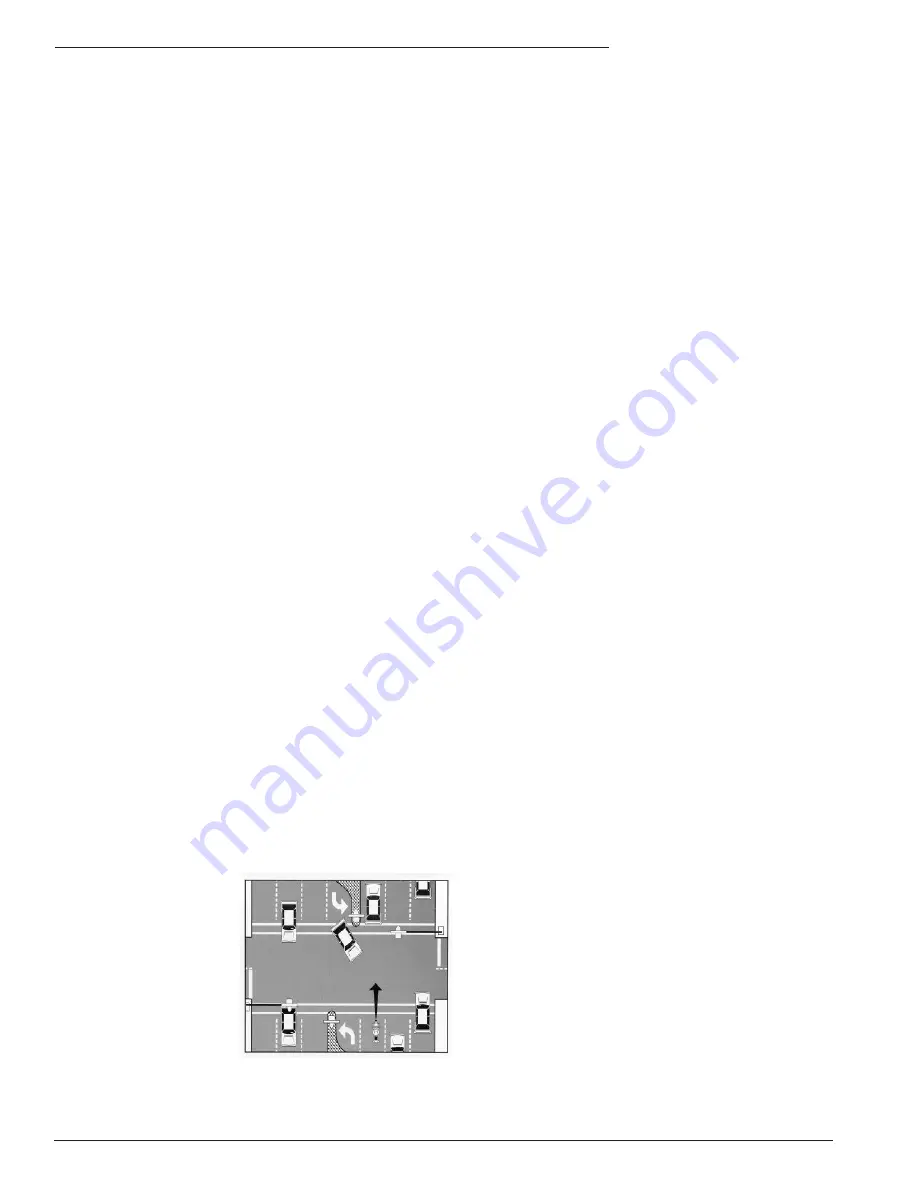
9
Colorado Motorcycle Operator’s Handbook
SCAN: Search aggressively ahead, to the sides and be-
hind to avoid potential hazards. Scanning provides you
with the information you need to make your decisions
in enough time to take action.
,'(17,)</RFDWHKD]DUGVDQGSRWHQWLDOFRQÁLFWV7KH
hazards you encounter can be divided into three groups
based on how critical their effect on you may be.
9HKLFOHVDQGRWKHUPRWRUF\FOHV0D\PRYHLQWR\RXU
path and increase collision impact.
3HGHVWULDQVDQGDQLPDOV$UHXQSUHGLFWDEOHDQGPDNH
short quick moves.
6WDWLRQDU\ REMHFWV 3RWKROHV JXDUG UDLOV EULGJHV
roadway signs, hedges, or rows of trees won’t
PRYHLQWR\RXUSDWKEXWPD\LQÁXHQFH\RXUULGLQJ
strategy.
PREDICT: Consider space and direction of a potential
hazard. Anticipating a vehicle moving away from you
is not as critical as a vehicle moving into your path.
Predict where a collision might occur. This is the “What
if...?” phase of SIPDE that depends on your knowledge
and experience.
DECIDE: Decide when, where, and how to act based on
types of hazards you encounter:
D]DUG
6WDWLRQDU\
0D]DUGV 0RYLQJ
EXECUTE: In high potential risk situations, such as in-
tersections, cover the clutch and both brakes to reduce
the time you need to react. To create more space and
minimize risk from any hazard:
&RPPXQLFDWH\RXUSUHVHQFHZLWKOLJKWVDQGRUKRUQ
$GMXVW\RXUVSHHGE\DFFHOHUDWLQJVWRSSLQJRUVORZLQJ
$GMXVW\RXUSRVLWLRQDQGRUGLUHFWLRQ
Most motorcycle/automobile collisions occur at inter-
VHFWLRQV$QLQWHUVHFWLRQFDQEHDQ\ZKHUHRWKHUWUDIÀF
may cross your path of
travel. Your use of SIPDE
at intersections is critical.
Be especially alert at in-
tersection with limited
visibility. Be aware of vi-
sually busy surroundings
that could camouflage
you and your motorcycle.
8. DANGEROUS SURFACES
Your chance of falling or being involved in a crash
increases whenever you ride across slippery surfaces,
uneven surfaces or obstacles, railroad tracks, grooves
and gratings.
8.1 SLIPPERY SURFACES
: Motorcycles handle better
when ridden on surfaces with good traction. Surfaces
that provide poor traction include:
:HWSDYHPHQWSDUWLFXODUO\MXVWDIWHULWVWDUWVWRUDLQ
and before surface oil washes to the side of the road.
*UDYHOURDGVRUZKHUHVDQGDQGJUDYHOFROOHFW
0XGVQRZDQGLFH
/DQHPDUNLQJVVWHHOSODWHVDQGPDQKROHFRYHUVHV
-
pecially when wet.
To ride safely on slippery surfaces:
5('8&(63(('6ORZGRZQEHIRUH\RXJHWWRDVOLS
-
pery surface to lessen your chances of skidding. It is
particularly important to reduce speed before entering
wet curves.
$92,' 68''(1 029(6$Q\ VXGGHQ FKDQJH LQ
speed or direction can cause a skid. Be as smooth as
possible when you speed up, shift gears, turn or brake.
86(%27+%5$.(67KHIURQWEUDNHLVVWLOOPRUHHI
-
fective than the rear brake, even on a slippery surface.
Apply it gradually and avoid locking up the front
wheel.
The center of a lane can become dangerous when wet.
When it starts to rain, ride in the tire tracks left by cars.
Often the left tire track will be the best position, depend-
LQJRQWUDIÀFDQGRWKHUURDGZD\FRQGLWLRQV:DWFKIRU
oil spots when you put your foot down to stop or park.
You may slip and fall.
Dirt and gravel collect along the sides of the road - espe-
cially on curves and ramps leading to and from highways.
Stay away from the edge of the road, particularly when
making sharp turns at intersections and when getting on
or off freeways at high speed. Rain dries and snow melts
faster on some sections of a road than on others. Ride in
the least slippery part of the lane at all times.
VERY SLIPPERY SURFACES: Cautious riders steer clear
RIURDGVFRYHUHGZLWKLFHRUVQRZ<RXPD\ÀQG\RXUVHOI
on a road with scattered patches or ice or snow. Patches of
ice tend to develop in low or shaded areas and on bridges
and overpasses. If you encounter wet surfaces or wet leaves
in the fall, these are just as slippery as an ice patch.
Avoid all of these surfaces if at all possible. If you can’t,
keep your bike straight up and proceed as slowly as pos-
sible, letting your feet skim along the surface so you can
catch yourself if the bike starts to fall. Be sure to keep off
the brakes and squeeze the clutch and coast while you
are on a very slippery surface.







































